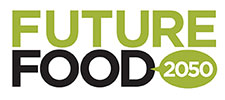Food Waste: Key to Feeding More People
IFT 75TH ANNIVERSARY
 Through reduction and/or utilization, food waste can play a big role in feeding a growing population, according to a series of articles posted on the website www.futurefood2050.com—a publishing venture from IFT featuring 75 food scientists, thought leaders, and global policy makers who offer solutions for sustainably feeding an estimated 9.6 billion people by 2050.
Through reduction and/or utilization, food waste can play a big role in feeding a growing population, according to a series of articles posted on the website www.futurefood2050.com—a publishing venture from IFT featuring 75 food scientists, thought leaders, and global policy makers who offer solutions for sustainably feeding an estimated 9.6 billion people by 2050.
About 33–50% of food produced annually for human consumption or 1.3 billion metric tons is lost due to spoilage or waste (see Food Waste Infographic at http://futurefood2050.com/food-waste-infographic-gallery/). Nearly a third of all food produced in the United States ends up in the waste stream. This equals 133 billion lbs of food with an estimated retail value of $161 billion or 141 trillion lost calories per year— the equivalent of 1,249 calories per day per American.
After seeing food wasted in the grocery channel for years, Trader Joe’s ex-president Doug Rauch is doing something about it and will launch Daily Table—a supermarket that will sell foods past their “expiration” dates—in the fall in Boston. “We have all this great food which is being discarded not for food safety reasons, but because it was either unsold inventory or cosmetically blemished. This food was not being tossed because manufacturers or grocers didn’t care, but because it was difficult to get it recovered,” said Rauch in an article “Selling consumers on ‘ugly’ food” authored by Clare Leschin-Hoar.
Rauch hopes Daily Table and other food stores like it can help launch a change in consumer attitudes that could lead to less wasted food from the start. “The customer demands perfect-looking fruit, and nature doesn’t grow food that way,” he says.
UK activist and author Tristram Stuart is involved in many grassroots efforts to reduce food waste. He launched Feeding the 5,000 campaign— a series of one-day events in major cities around the globe in which 5,000 people get a lunch made from food that would otherwise have been wasted. In 2009, Stuart persuaded British supermarkets to sell “ugly” fruit and vegetables that would otherwise be discarded or fed to animals. In 2012, 300,000 tons of produce were saved.
“We already grow enough food for 12 billion. There are some regions of the world where increased production would be beneficial, but globally speaking that is not what our primary objective is,” said Stuart in an article “Ending food waste in the developed world” authored by David Derbyshire.
Food scientist John Floros is focusing his efforts on food preservation to reduce food waste in developing countries. Floros is spearheading the Feed the Future Innovation Lab for the Reduction of Post-Harvest Loss at Kansas State University. Initially the new lab will target postharvest losses and food waste for grain and oilseed crops, tuberous root crops, and peanut and legume crops in Bangladesh, Ethiopia, Ghana, and Guatemala. Researchers will investigate how to prevent insect pests and fungus when crops are stored as well as improved techniques for measurement, drying, and storage.
“The first place to look for food waste solutions is the field. We cannot forget the quality of food is at its highest in the field. And we can only preserve what we get in the field,” explained Floros in an article “Innovative technology for global food waste solutions” authored by Lisa Palmer. Simple sun drying, for example, can preserve some fresh produce, he said. Other products could be salted or concentrated for preservation. Some may be heated to high enough temperatures for pasteurization or sterilization and then packaged appropriately. “Food science can help resolve major challenges that, without us, I don’t think society will be able to resolve on its own,” Floros said.
After more than 20 years of research, animal nutritionist Elsje Pieterse’s idea of recycling nutrients by harvesting insects as a protein source for livestock is now a reality. Pieterse is on the advisory board of AgriProtein, a South Africa-based company that harvests fly larvae raised on waste nutrients. At a “fly farm” north of Cape Town, the company processes the maggots into a shelf-stable, protein-rich feed for fish, pigs, and chickens, with a price tag comparable to that of other animal feeds with similar nutrition profiles.
“It’s a very palatable product, the black soldier fly maggots. I haven’t seen a single animal which does not naturally start consuming them,” said Pieterse in an article “South African ‘fly farm’ recycles food waste nutrients” authored by Rebecca L. Weber.
The concept of nutrient recycling also holds promise for small-scale food waste solutions. AgriProtein has been piloting a project in the rural South African town of Klipheuwel. “All the waste that comes from the community, as well as the sewage, goes into a production system with the black soldier fly,” explained Pieterse. “We’re busy finalizing the food safety trials now, and we should have answers in five or six months. It’s very promising.”
